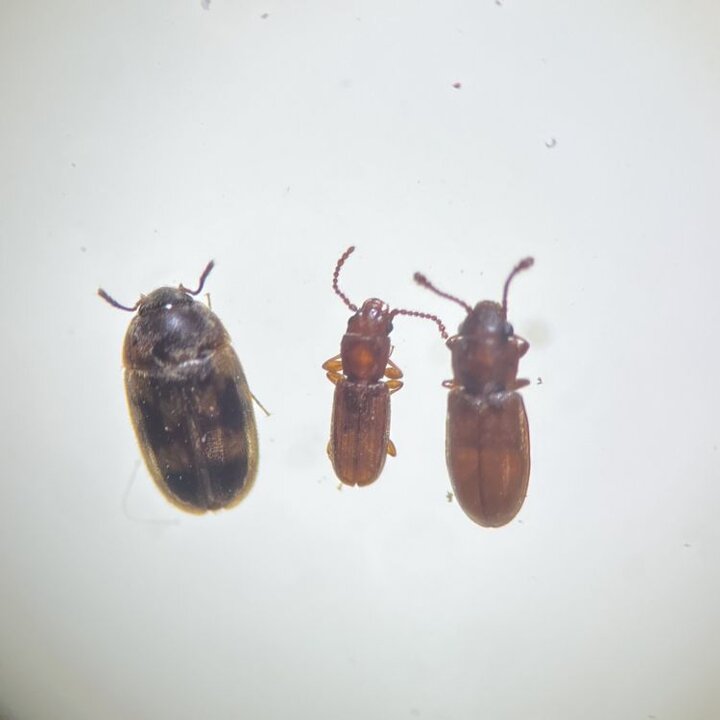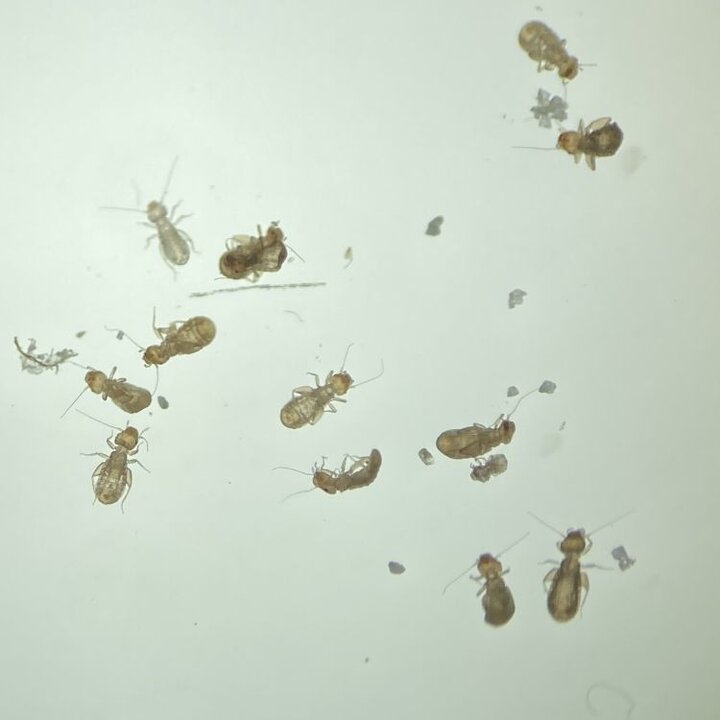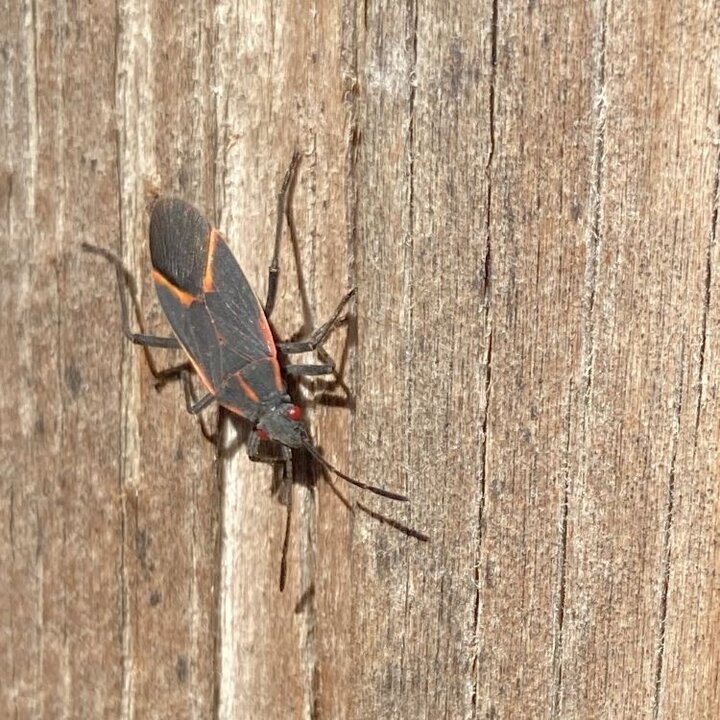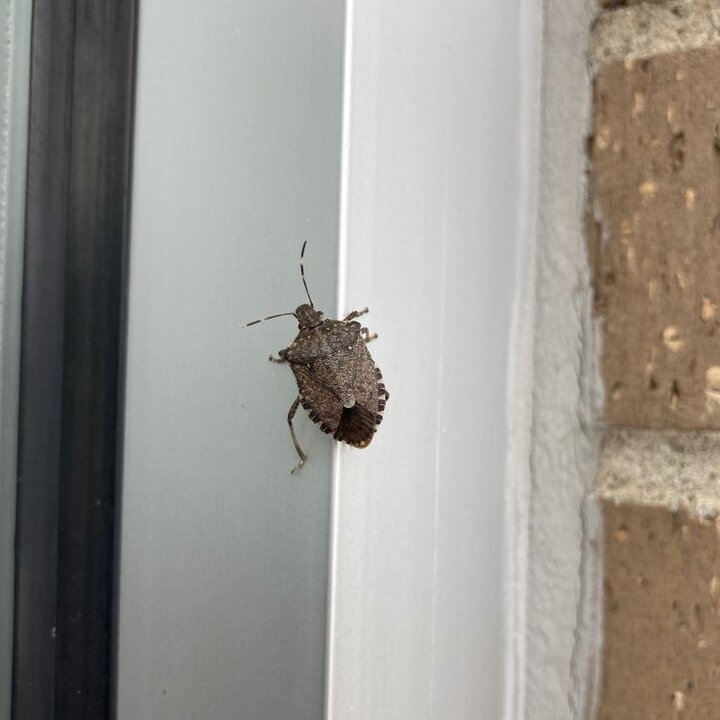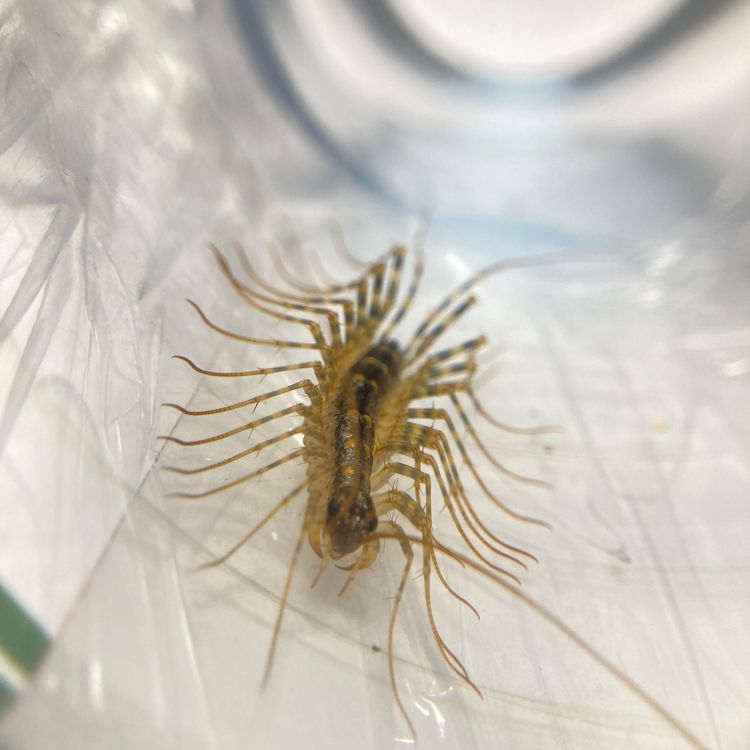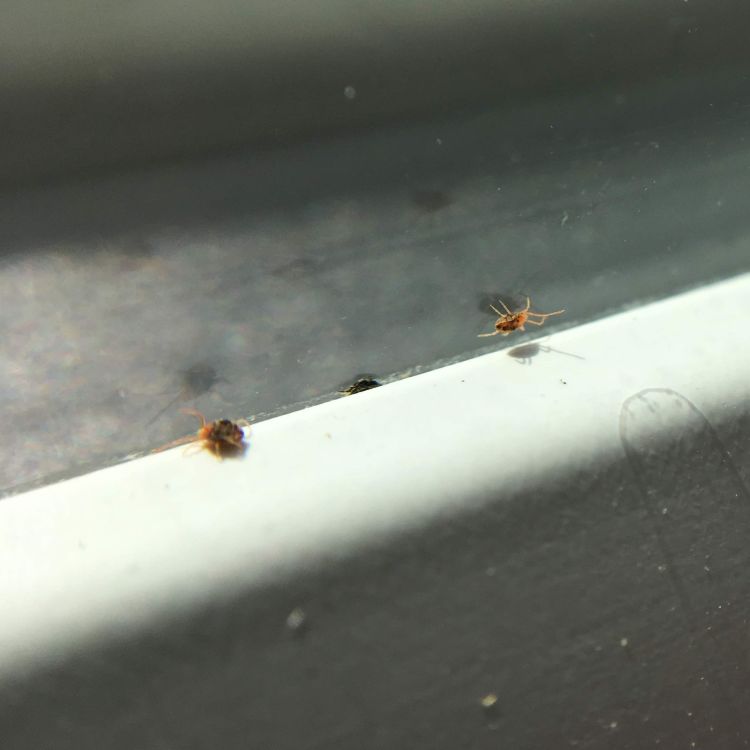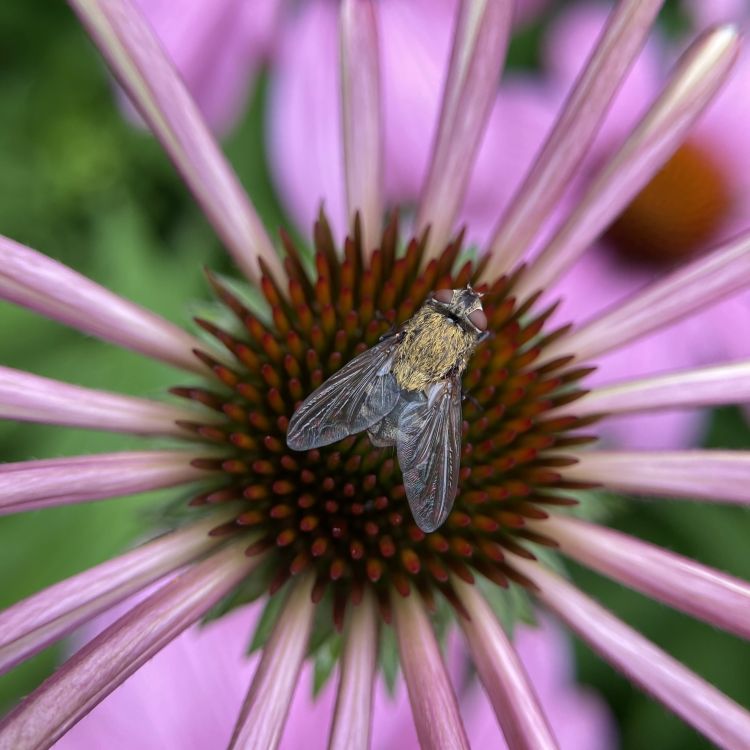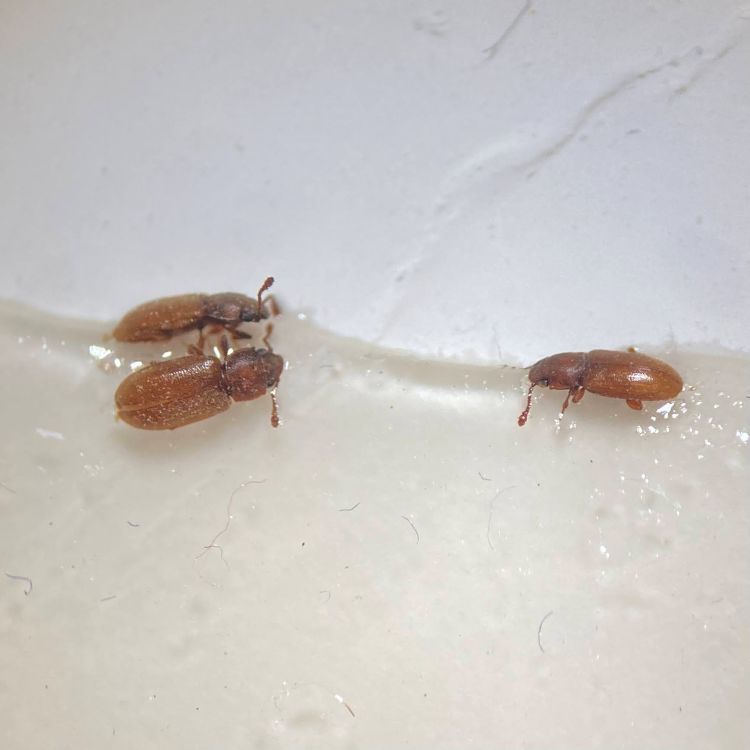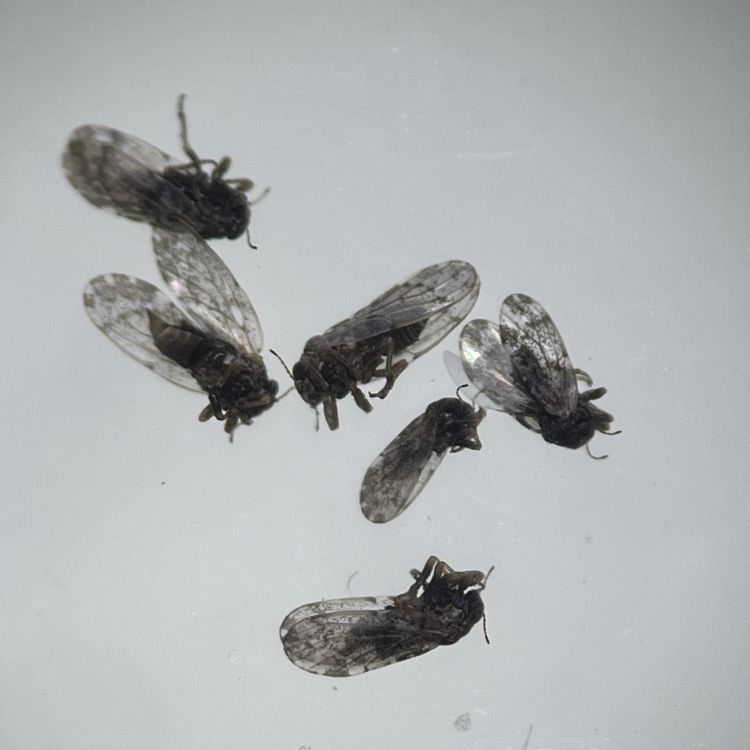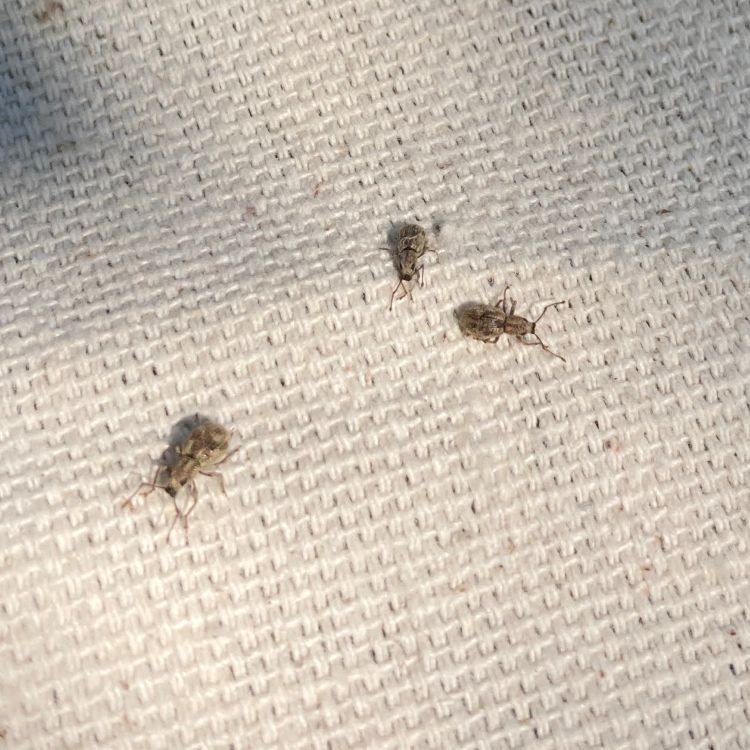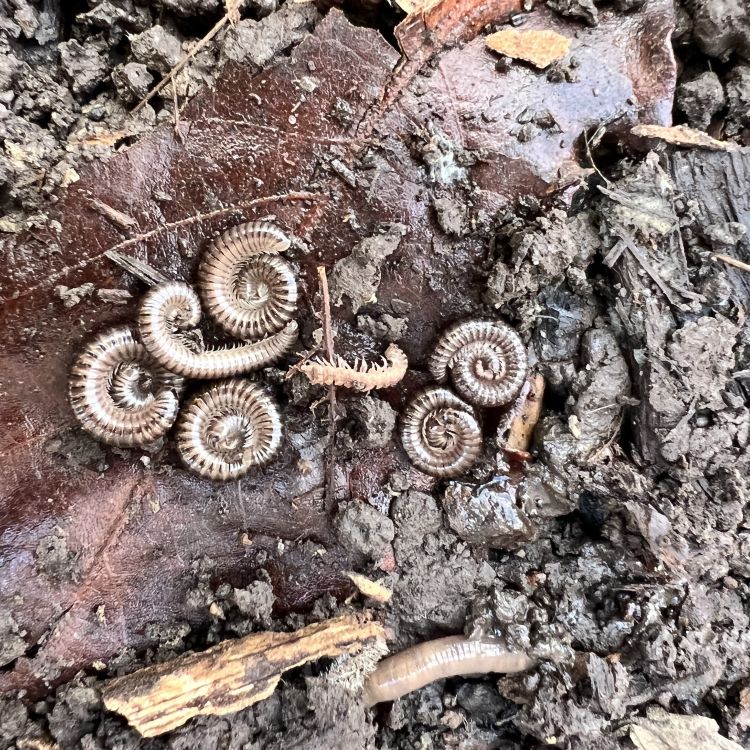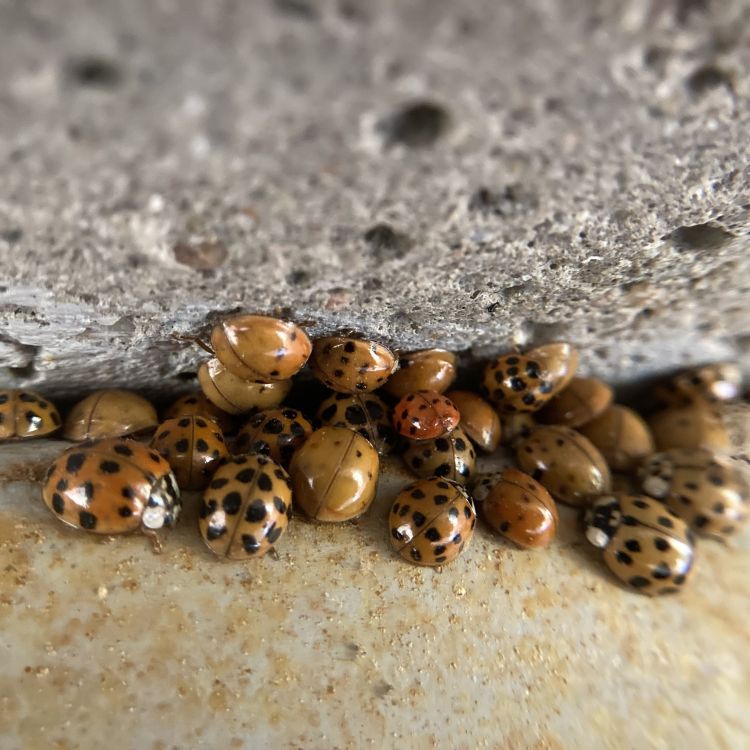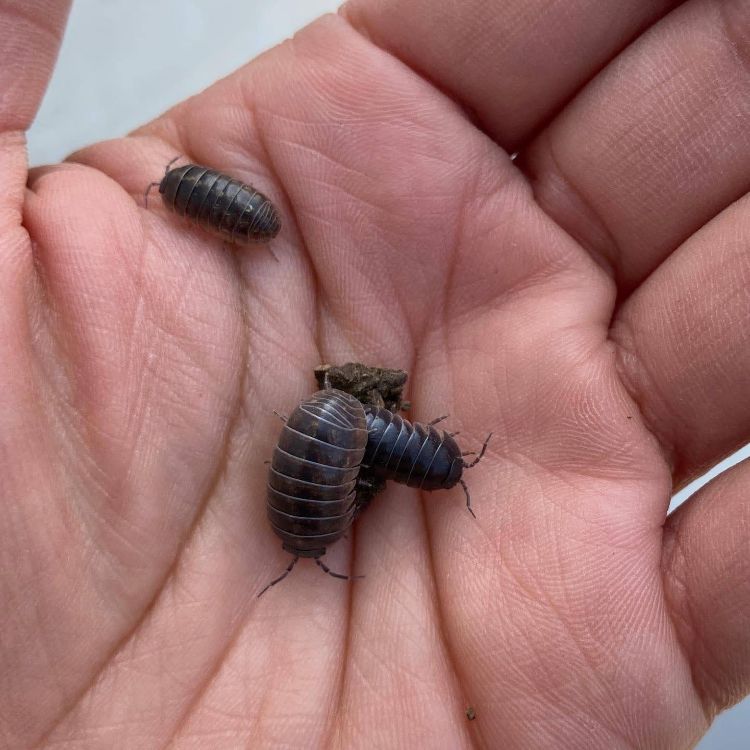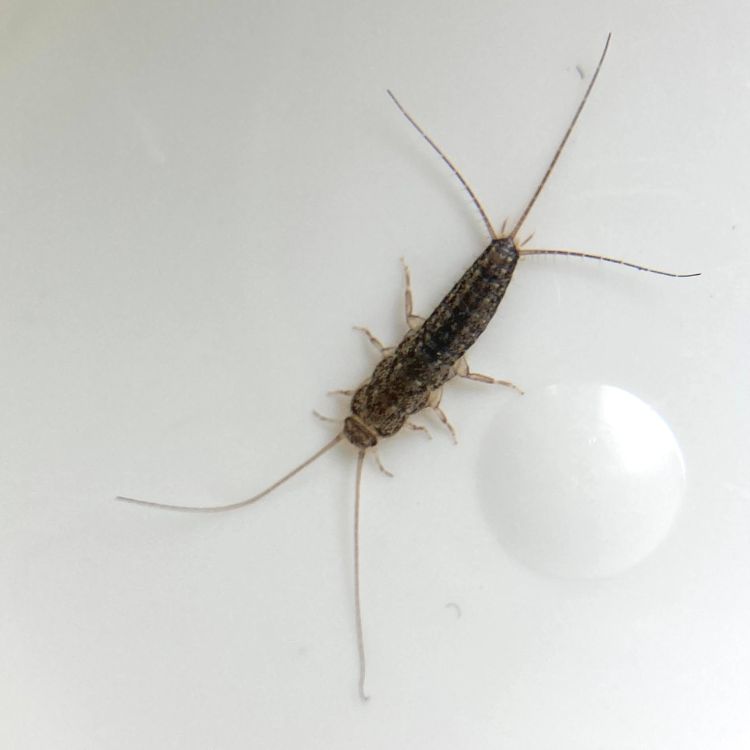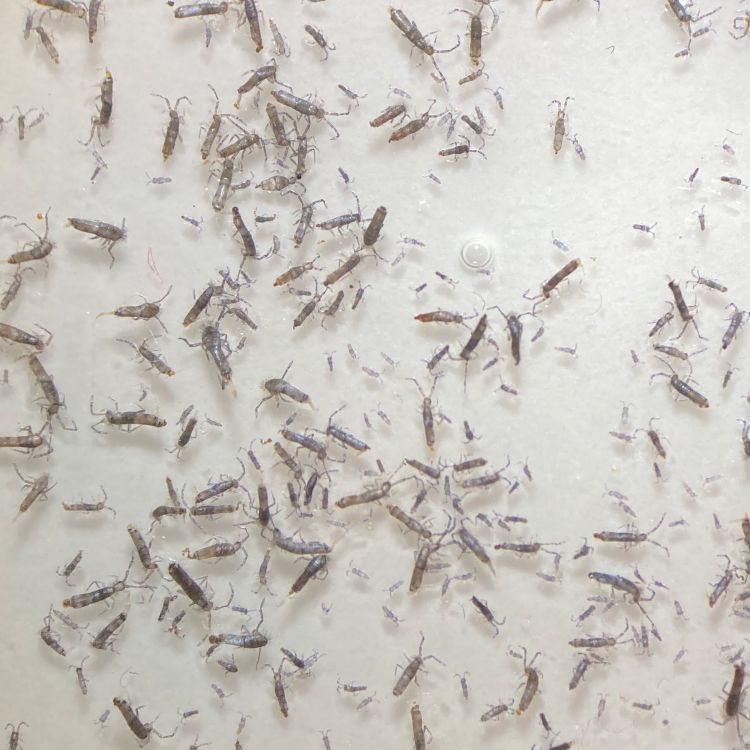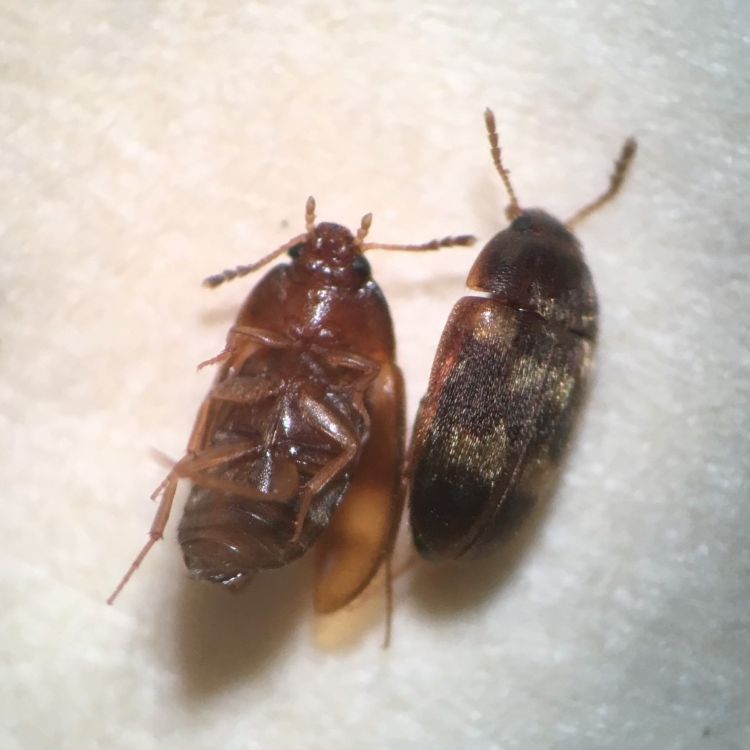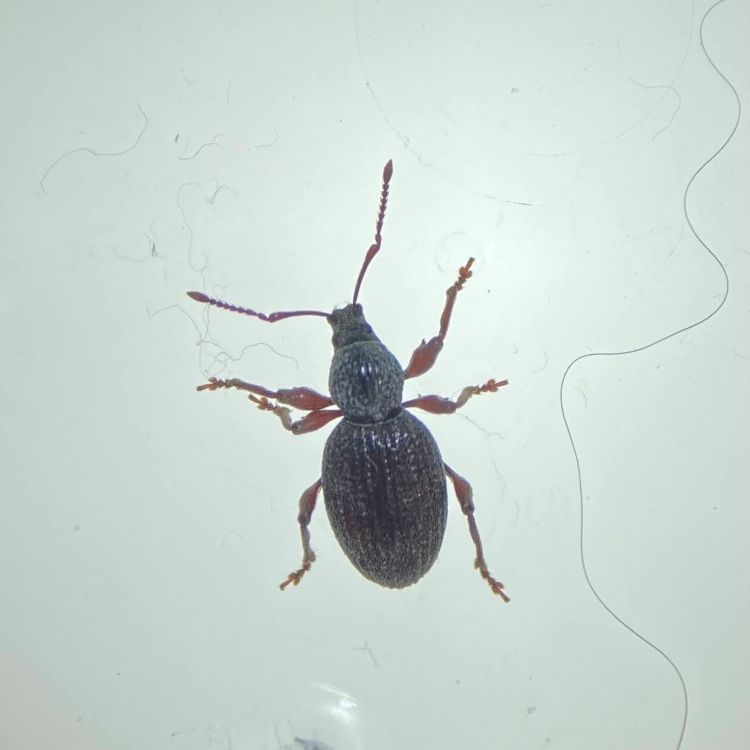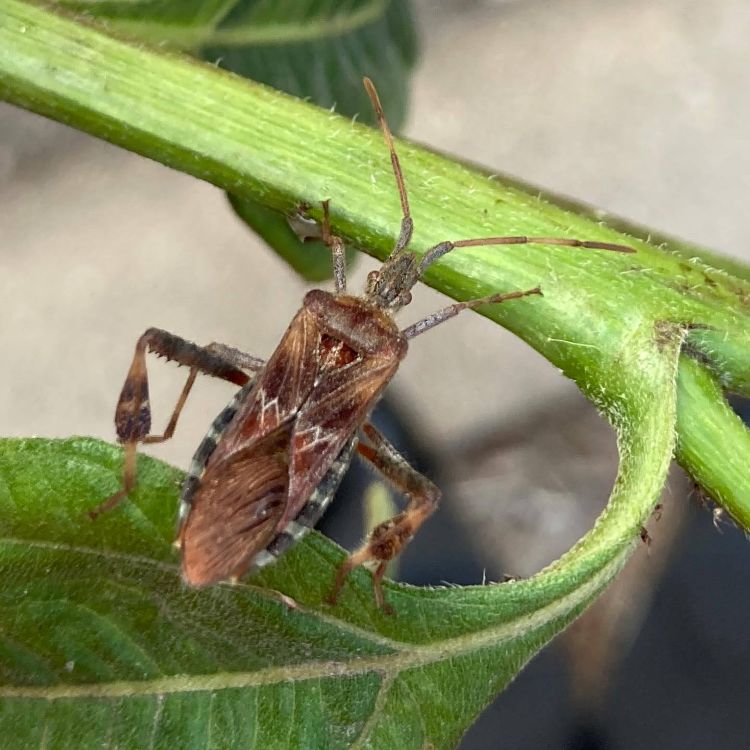Click image to enlarge. | |
|
| Small beetles less than 1/8" long, found on walls, strong fliers Foreign grain beetle: 1/12" Reddish brown color, projections behind eye Hairy fungus beetle: 1/10" Black with brown pattern, oval-shaped body, fine hair on wing covers, attracted to light Plaster beetle: 1/16" long, reddish-brown color, square-shaped thorax
|
|
| Habitat: Damp areas with high humidity such as crawl spaces, basements, potted plants, windowsills, storage areas, etc. Psocids: <1/16" inch long, wingless, soft-bodied, gray or light brown, large head, narrow thorax, large abdomen (look like a light bulb), threadlike antennae, enlarged lip (clypeus) on the front of face
|
|
| Nymph: Bright red Adult: 1/2" long, oval-shaped, dull black with reddish-orange stripes behind heads and along wing bases, piercing-sucking mouthparts, long antennae Other features: Strong defensive odor as defense mechanism when disturbed or crushed
|
|
| Eggs: Laid in clusters on underside of leaf, look like little barrels Nymph: Young nymphs are bright colored and round, older reddish brown with spines Adult: Mottled brown, smooth shoulders, margin of abdomen alternate light and dark bands, white bands on antennae and legs
|
|
| CentipedesCentipedes House Centipedes: Your Leggy Housemate Vary in length and number of legs, flattened, 1 pair of legs per body segment, can be a variety of colors, moves very fast Stone: Reddish-brown, 15 pairs of legs House: Brown-gray with stripes, 15 pair of long, hair-like legs
|
|
| Damage: Light feeding tracks on leaf Mite: 1/32" in size, reddish or greenish color, oval shaped, extra-long front legs, flattened body, no silk Host plants: Grasses, clover, other weeds, honeysuckle, ivy, elm, apple, and gooseberry
|
|
| Adult: 3/16" long, golden-yellow hairs on thorax, checkered black and silver abdomen, wings overlap at rest Other features: Strong odor when crushed like buckwheat honey
|
|
| Habit: Often found clustering in large numbers near ceiling on upper floors, readily fly Beetle: 1/12" long, reddish-brown, clubbed antenna, shiny wing covers, and pair of peg-like projections behind eyes (this is identifying characteristic)
|
|
| Damage: Nuisance pest that gather on window screens and windowsills in early spring. On hackberry trees, psyllids make prominent galls or raised swellings on leaves Adult: 1/10" long, mottled grayish to black body, look like mini-cicadas, jump and fly when disturbed
|
|
| Habit: Often found clustering in large numbers on walls, ceiling, window screens, furniture and hitchhike on people's clothing Weevil: 1/8" long, furry, mottled gray, lightbulb-shaped body, long elbowed, clubbed antennae, longitudinal lines and grooves on wing covers, short and broad snout
|
| | Most insects spend the winter as an egg or pupae to help protect themselves from the cold. Some though may be an adult for the cold months and need a warm place to hide. In many cases, this could be your home. |
| | The majority of insects we find inside structures originate from outside. Many get in accidentally, and when conditions are favorable, they can complete some or all of their lifecycle indoors. |
|
| Vary in length and number of legs, cylindrical or flattened bodies, 2 pairs of legs per body segment, can be a variety of colors, slow moving Defense mechanisms: curl up when disturbed, secrete an array of chemicals to protect from predation
|
|
| Larva: Black and spiny with orange markings Adult: 1/3" long, range of colors from orange to yellow to red, may have 0 to 19 black spots, has black "M" shape marking behind head Other features: Strong smelling, yellow, defensive fluid secreted from legs, may stain fabrics or furniture
|
|
| Oval shaped, 11 body segments and 7 pairs of legs, usually gray or brown color, slow moving Pillbug: 1/4" to 1/2" long, can roll up into a ball because they lack appendages at the end of body Sowbug: all of the above but with tail-like appendages
|
|
| Wingless, tapered and flattened body, long antennae, three long filaments extend from tip of abdomen Damage: Occasionally small holes in fabric or paper artifacts Preferred environment: Silverfish associated with high moisture and high relative humidity; Firebrats associated with higher temperatures (89-105°F) and dryer conditions
|
|
| Habitat: Attracted to areas of damp areas with high humidity where mildew odors are detectable; during times of hot, humid weather Springtails: 1/32" to 1/8" long, wingless, soft-bodied, elongate body with long antennae, forked (springlike/furcula) appendage under abdomen allows them to jump
|
|
| Damage: Does not damage stored grain, but presence indicates poor storage conditions and mold growth Adult: 1/10" long, black with mottled brown pattern, oval-shaped body, fine hair on wing covers, antennae end in 3-segmented club
|
|
| Habit: Often found clustering in large numbers on the floors in living areas when it is hot outside Weevil: 3/16" long, shiny, black, lightbulb-shaped body, long elbowed, clubbed antennae, longitudinal lines, short and thick snout, front leg has spur on femur
|
|
| Nymph: Bright red, wingless Adult: 3/4" long, reddish-brown color, faint zigzag stripe across wings, flattened tibia of hind legs, piercing-sucking mouthparts, long antennae Other features: Strong defensive odor as defense mechanism when disturbed or crushed
|
